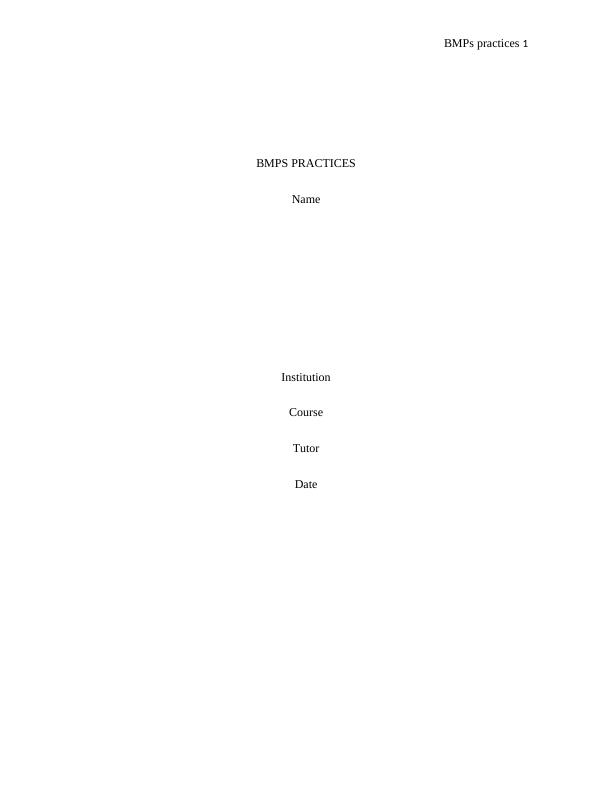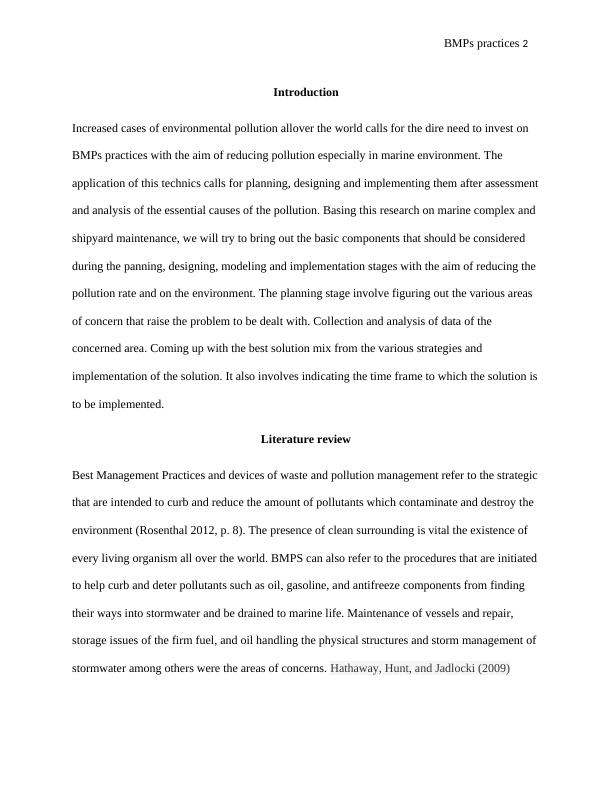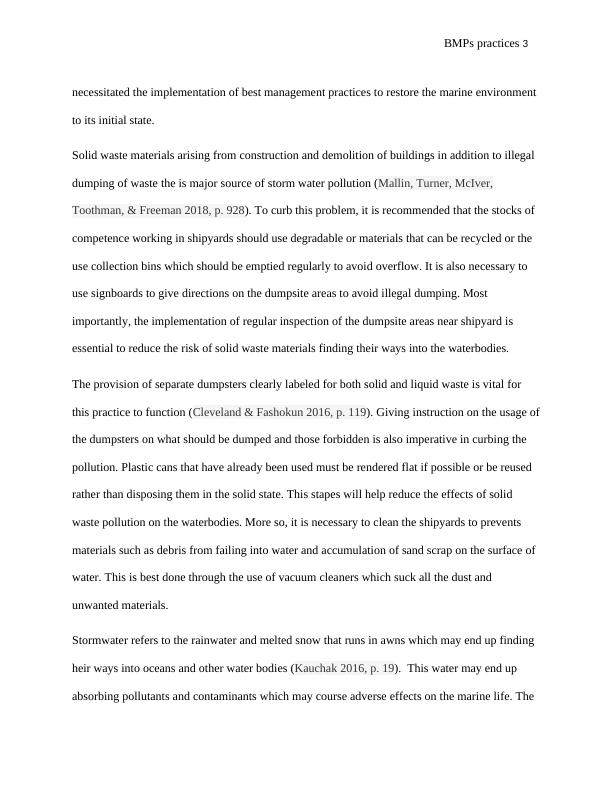BMPs Practices for Marine Environment Pollution Reduction
Focus on the planning, modelling, design and implementation aspects of the BMP
7 Pages1633 Words316 Views
Added on 2023-06-12
About This Document
This article discusses the need for Best Management Practices (BMPs) to reduce marine environment pollution. It covers planning, designing, and implementing BMPs for shipyard maintenance and marine complex. Techniques include porous pavements, extended detention ponds, and solid waste management. The article also highlights the importance of regular inspection and cleaning of filters and sediments to ensure minimum escape of pollutants into water bodies.
BMPs Practices for Marine Environment Pollution Reduction
Focus on the planning, modelling, design and implementation aspects of the BMP
Added on 2023-06-12
ShareRelated Documents
End of preview
Want to access all the pages? Upload your documents or become a member.



